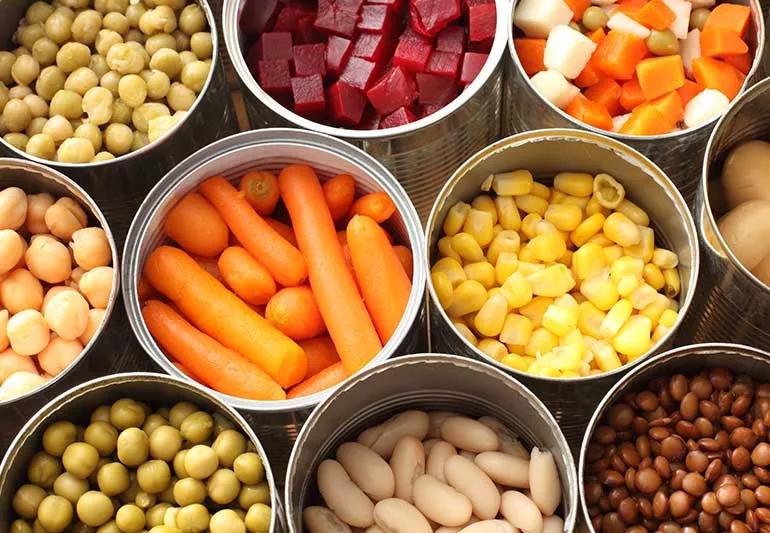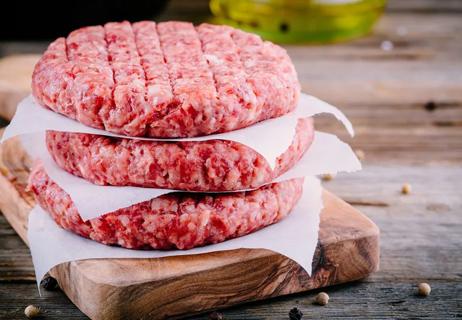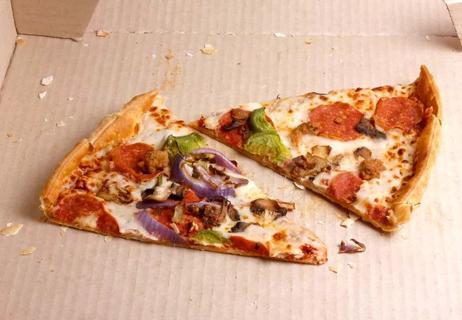Not all processed foods are bad, but the fewer the ingredients, the better

Canned and packaged food has a bad reputation for being less nutritious than its fresher counterparts. While it’s certainly true in some instances, the way we talk about “processed” food leads to a lot of generalizations — many of which do more harm than good.
Advertisement
Cleveland Clinic is a non-profit academic medical center. Advertising on our site helps support our mission. We do not endorse non-Cleveland Clinic products or services. Policy
Are shelf-stable foods and packaged foods the same thing? Do both fall under the “processed food” umbrella?
According to registered dietitian Anthony DiMarino, RD, LD, there’s actually no universally accepted definition for “processed food.” That’s in part because there isn’t a regulatory body responsible for overseeing all the food items that might fall into that category.
“There are established regulations for some of the foods we eat. For example, terms like ‘low-sugar’ or ‘low-fat’ are defined by the FDA, and there are certain criteria foods have to meet before making those claims,” DiMarino explains.
In lieu of a state-sanctioned definition of “processed food,” dietitians have created their own, and it’s pretty simple.
“Within the dietitian community, it’s kind of become accepted that anything that isn’t straight off the farm is processed,” says DiMarino. “So, you go to an apple orchard, pull an apple off the tree and you go home with it. That’s the only food that’s not processed.”
He continues, “Anything you get at the store, there’s some spectrum of process going on. That apple you buy at the grocery store was picked, cleaned and transported. That’s on the minimally processed end of the spectrum.”
Advertisement
On the other end of the spectrum are foods that are prepackaged. “Maybe there’s a bunch of added ingredients or artificial flavorings to it, maybe it’s manufactured and not just made from nature. That’s the highly processed end of the spectrum,” he adds.
Using the definition of processed foods that dietitians employ, almost everything we eat in a day is processed. As DiMarino explains, “it just comes down to how much the food is processed and what that particular kind of processing does to the food, and to your health.”
While it’s true that some packaged foods leave a lot to be desired nutritionally, there’s also plenty of healthy fare out there to choose from, and plenty of good reasons to keep lightly processed foods on your grocery list.
Stocking your fridge with shelf-stable goods keeps you from making frequent trips to the store. That’s great news for both your schedule and — if you’re driving — the environment. It also cuts down the amount of time and effort involved in incorporating healthy foods into daily meals.
It’s tough out there, folks. Standing at the checkout line can feel like a punch in the gut under the best of circumstances, and it sometimes feels even worse when you’re trying to eat a varied and balanced diet. Shelf-stable food is one of many ways we can be healthy on a budget. Fresh tuna may be prohibitively expensive for many of us, but we can get a can (or pouch) of the stuff for less than $2.
Fresh food is usually ideal, but as DiMarino notes, it also goes bad pretty quickly. While some nonperishable foods are heavily processed, others are staples of a healthy diet. It’s especially nice to have access to canned or frozen fruits and vegetables that might otherwise be out of season.
The nonperishable nature of many packaged foods also makes them essential for emergency planning purposes. Whether you live in an area that’s subject to extreme weather, you’re trying to plan for an unusually buys work week or your paycheck isn’t stretching like it used to, it’s nice to know that you have food on hand.
Most of us know that fresh is best, but it might not always be immediately clear why. A lot of it has to do with the work that goes into making a food item shelf-stable.
According to DiMarino, “Prepackaged foods are going to be more heavily processed. Maybe manufacturers add some salt or fat to the food to keep it fresh for a longer period of time. Make sure that you’re looking at how the product was packaged and what was added to it. Choose items with fewer calories from fat or sugar and less overall sodium.”
When shopping for nonperishable or packaged food, the general rule of thumb is the fewer the ingredients, the better.
Advertisement
DiMarino’s advice is straightforward: “You want to find shelf-stable, prepackaged foods that have the fewest ingredients possible. Get something like canned tuna. It’s packed in water, so it’s just two ingredients: tuna and water. Choose that as opposed to those convenient pastas that have the powder packet, the pasta and dehydrated vegetables.”
The more ingredients you’re dealing with, the more opportunities there are for quality problems to emerge.
When you pick out produce from your local store or farmer’s market, you know what you’re getting. A bell pepper is a bell pepper — a quick visual inspection will tell you what you need to know about its suitability for your table.
The same can’t be said about many packaged goods. The U.S. Food and Drug Administration (FDA) doesn’t regulate the use of terms like “low-carb,” “made with whole grains” or “natural.” The FDA does regulate some terms — like “gluten-free” and “zero trans-fats” — but also allows foods labeled that way to contain traces of an offending ingredient. When it comes to shelf-stable foods, it’s hard to know if you’re getting exactly what you paid for.
Who among us can confidently open our cabinet, assured that all the food packed away inside is still edible? It’s pretty easy to tell when the milk’s off or when it’s time to toss the blueberries. In that respect, the benefit of shelf-stable foods is also a drawback: That stuff can sit around for a long time.
Advertisement
How do you know if the food in your pantry is OK to eat? The USDA says that most shelf-stable foods are safe indefinitely, but those expiration dates suggest otherwise.
DiMarino encourages us to use our best judgment. “Check the integrity of the package,” he says, “It’s not dented, is it? Is it broken? Is it oozing? Use your senses: Open it up, smell it. Take a look at it. Is it moldy? Is it green? Is it gross? How’s the texture?”
DiMarino’s advice: “If it doesn’t taste right, it’s probably bad. You should dispose of it.”
For good or for ill, shelf-stable and packaged foods are here to stay. They may not always be ideal, but it’s also worth remembering that any vegetable is better than no vegetable at all. At the end of the day, being able to choose between fresh and shelf-stable foods is a luxury.
So, how do we make processed foods work for our health and not against it?
Whether you’re stocking up in preparation for a long winter, to refill your earthquake or hurricane supplies, or to avoid an extra trip to the grocery store, the following shelf-stable options are as healthy as they are affordable:
Advertisement
In a perfect world, all the food we eat would always be fresh and only minimally processed. It’s a great aspiration, but real people living real lives can’t ditch shelf-stable and packaged foods entirely. They’re cheap, convenient and helpful to have on hand. The good news is there are plenty of healthy, minimally processed foods that belong in a well-rounded diet. Doing a little homework will get your pantry ready for its “shelfie” in no time.
Learn more about our editorial process.
Advertisement

Leftovers can be kept in the fridge for three to four days or frozen for three to four months

Ultimately, rice is safe to eat, but the type, where it’s grown and how you cook it may be factors to consider

Washing your hands, thoroughly cleaning kitchen tools and preparing meat separately can reduce the risk of foodborne illness

Extended outages lasting more than four hours can make food in your fridge unsafe to eat

Microwaves use non-ionizing radiation and haven’t been shown to cause cancer — follow food safety practices and use microwave-safe containers

Once perishable food hits the table, it’s typically good for about two hours

Color, texture, smell and expiration date all hold important clues

No! Be sure to put your leftovers in the fridge

Babies can get congested easily, but you can calm their cough by keeping them hydrated, using nasal drops and running a humidifier

Weight loss may cause loose, sagging skin and muscle loss to your rear

Several conditions, like vitiligo and fungal infection, can cause a loss of pigmentation, leading to white spots or patches on your skin